Items filtered by date: January 2024
Causes of Bone Spurs on the Heel
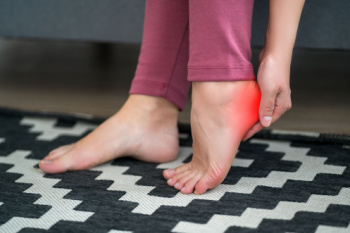
Heel bone spurs, medically known as osteophytes, are abnormal growths that can result in pain and restricted movement. Often unnoticed until visible on an X-ray, heel bone spurs are associated with degenerative joint diseases, such as osteoarthritis, where the breakdown of joint cartilage prompts the body to form new bone as a reparative measure. This process leads to the development of bone spurs along the edges of affected joints, particularly in the heel region. Besides aging, various factors contribute to heel bone spurs, including injuries and overuse, common among runners and dancers. Other factors are hereditary predisposition, obesity, and congenital bone issues. Many people may have heel bone spurs without symptoms, but others can experience pain and loss of joint mobility if the spur rubs against bones or presses on a nerve. If you suspect you have a heel bone spur or are experiencing unexplained heel pain, it is suggested that you schedule an appointment with a podiatrist for a comprehensive evaluation and the appropriate treatment plan.
Heel spurs can be incredibly painful and sometimes may make you unable to participate in physical activities. To get medical care for your heel spurs, contact Edward Fryman, DPM, FACFAOM from Seaford Foot Care Center. Our doctor will do everything possible to treat your condition.
Heels Spurs
Heel spurs are formed by calcium deposits on the back of the foot where the heel is. This can also be caused by small fragments of bone breaking off one section of the foot, attaching onto the back of the foot. Heel spurs can also be bone growth on the back of the foot and may grow in the direction of the arch of the foot.
Older individuals usually suffer from heel spurs and pain sometimes intensifies with age. One of the main condition's spurs are related to is plantar fasciitis.
Pain
The pain associated with spurs is often because of weight placed on the feet. When someone is walking, their entire weight is concentrated on the feet. Bone spurs then have the tendency to affect other bones and tissues around the foot. As the pain continues, the feet will become tender and sensitive over time.
Treatments
There are many ways to treat heel spurs. If one is suffering from heel spurs in conjunction with pain, there are several methods for healing. Medication, surgery, and herbal care are some options.
If you have any questions feel free to contact our office located in Seaford, NY . We offer the latest in diagnostic and treatment technology to meet your needs.
Wounds That Don't Heal Need to Be Checked
Proper Width of Shoes
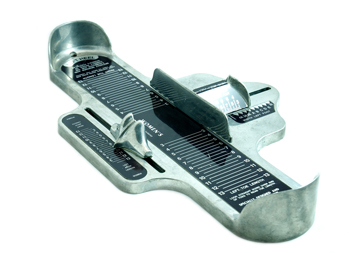
Properly fitting shoes are essential for foot health, considering that your feet can take thousands of steps daily. Shoe width is equally important as shoe length and can greatly affect your comfort and overall well-being. Shoe width is typically measured around the forefoot, which is the widest part of your foot. However, not all shoe brands offer a variety of widths, making it challenging to find options narrower or wider than the standard. It is important to have your feet measured each time you shop for shoes since your feet can change shape and size over time. Measuring at day's end, when your feet are at their largest, helps ensure you do not underestimate the width. Most people have one foot larger than the other, so choose shoes based on the size of your larger foot. Shoes should fit comfortably from the start, as trying to break in footwear that is too tight can lead to foot problems and pain. In fact, wearing tight shoes can cause common foot issues like corns, calluses, ingrown toenails, bunions, and hammer toes, which can be painful and may require treatment, including surgery in severe cases. If persistent foot pain, toe deformities, signs of infection, or underlying health issues such as diabetes or poor blood flow are a concern, it is suggested that you consult a podiatrist for appropriate guidance in selecting the proper width shoes for your feet.
Getting the right shoe size is an important part of proper foot health. Seek the assistance of Edward Fryman, DPM, FACFAOM from Seaford Foot Care Center. Our doctor will provide the care you need to keep you pain-free and on your feet.
Getting the Right Shoe Size
There are many people who wear shoes that are the incorrect size, negatively affecting their feet and posture. Selecting the right shoes is not a difficult process, so long as you keep several things in mind when it comes to choosing the right pair.
- When visiting the shoe store, use the tools available to measure your foot.
- Be sure there is ‘wiggle room’. There should be about an inch between your toes and the tip of your shoes.
- Do not always assume you are the same size, as manufacturers run differently.
- Purchase shoes later in the day, as your feet swell as the day progresses.
- If a shoe is not comfortable, it is not suitable. Most shoes can’t be ‘broken in’, and comfort should be the ultimate goal when it comes to choosing the right pair of shoes
As our feet hold our body weight and keep us moving, it is important to treat them right. Picking the right pair of shoes can provide your feet comfort and mobility without pain.
If you have any questions, please feel free to contact our office located in Seaford, NY . We offer the newest diagnostic and treatment technologies for all your foot care needs.
Definition and Causes of an Acute Ankle Sprain
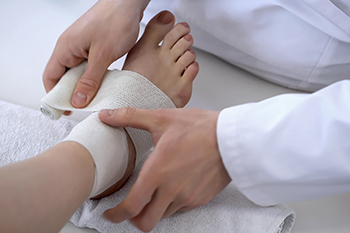
An acute ankle sprain refers to a sudden and unexpected injury to the ligaments that support the ankle joint. These ligaments can become stretched or torn when the foot twists or turns beyond its normal range of motion. This injury often results from a misstep, an awkward landing, or a sudden change in direction, such as in sports activities. The causes of an acute ankle sprain are typically linked to excessive or forceful movements that strain the ankle ligaments. Common situations include stumbling on uneven ground, stepping off of a curb, or rolling the ankle during sports activities, such as basketball or soccer. Wearing high heels and poorly fitting footwear can also increase the risk of ankle sprains by destabilizing the ankle. Understanding the definition and causes of an acute ankle sprain is essential for both prevention and timely treatment. If you have sprained your ankle, it is strongly suggested that you consult a podiatrist who can accurately diagnose this condition, and offer treatment methods that are right for you.
Although ankle sprains are common, they aren’t always minor injuries. If you need your ankle injury looked at, contact Edward Fryman, DPM, FACFAOM from Seaford Foot Care Center. Our doctor can provide the care you need to keep you pain-free and on your feet.
How Does an Ankle Sprain Occur?
Ankle sprains are the result of a tear in the ligaments within the ankle. These injuries may happen when you make a rapid shifting movement while your foot is planted. A less common way to sprain your ankle is when your ankle rolls inward while your foot turns outward.
What Are the Symptoms?
- Pain at the sight of the tear
- Bruising/Swelling
- Ankle area is tender to touch
- In severe cases, may hear/feel something tear
- Skin discoloration
Preventing a Sprain
- Wearing appropriate shoes for the occasion
- Stretching before exercises and sports
- Knowing your limits
Treatment of a Sprain
In many cases, the RICE method (Rest, Ice, Compression, and Elevate) is used to treat ankle sprains. However, you should see a podiatrist to see which treatment option would work best with your injury. In severe cases, surgery may be required.
It is important to ask your doctor about rehab options after you receive treatment for your injury. Stretching, strength training, and balance exercises may help the ankle heal while also preventing further injury.
If you have any questions, please feel free to contact our office located in Seaford, NY . We offer the newest diagnostic and treatment technologies for all your foot care needs.
Definition and Causes of Foot Blisters
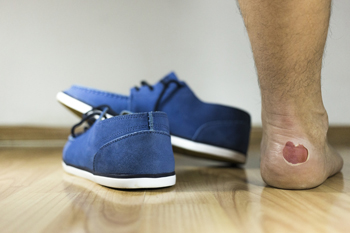
Foot blisters are small fluid-filled sacs that form on the skin, and are a common ailment with multifaceted origins. Foot blisters typically arise from friction, where repetitive rubbing between the shoe and the skin causes layers of the epidermis to separate. Wearing ill-fitting footwear, especially when new or improperly broken in, is a primary catalyst for developing foot blisters. Intense physical activity or prolonged periods of standing can exacerbate the issue, as the feet endure heightened levels of pressure and moisture. Additionally, moisture itself, whether from sweat or wet conditions, softens the skin, making it more susceptible to blister formation. If you have a foot blister or if an existing foot blister has become infected, it is suggested that you consult a podiatrist who can offer you correct treatment and prevention tips.
Blisters are prone to making everyday activities extremely uncomfortable. If your feet are hurting, contact Edward Fryman, DPM, FACFAOM of Seaford Foot Care Center. Our doctor can provide the care you need to keep you pain-free and on your feet.
Foot Blisters
Foot blisters develop as a result of constantly wearing tight or ill-fitting footwear. This happens due to the constant rubbing from the shoe, which can often lead to pain.
What Are Foot Blisters?
A foot blister is a small fluid-filled pocket that forms on the upper-most layer of the skin. Blisters are filled with clear fluid and can lead to blood drainage or pus if the area becomes infected.
How Do Blisters Form?
Blisters on the feet are often the result of constant friction of skin and material, usually by shoe rubbing. Walking in sandals, boots, or shoes that don’t fit properly for long periods of time can result in a blister. Having consistent foot moisture and humidity can easily lead to blister formation.
Prevention & Treatment
It is important to properly care for the affected area in order to prevent infection and ease the pain. Do not lance the blister and use a Band-Aid to provide pain relief. Also, be sure to keep your feet dry and wear proper fitting shoes. If you see blood or pus in a blister, seek assistance from a podiatrist.
If you have any questions, please feel free to contact our office located in Seaford, NY . We offer the newest diagnostic and treatment technologies for all your foot care needs.
Identifying Symptoms of Poor Circulation in the Feet
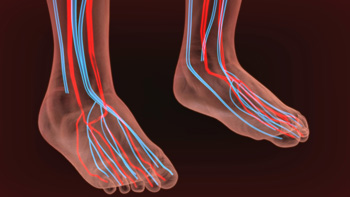
Poor circulation in the feet can manifest in various ways, serving as a silent signal of underlying health issues. One may notice a persistent tingling sensation or numbness, indicating compromised blood flow to the extremities. Swelling and discoloration, particularly a bluish or pale tint, are common signs as well. The skin might feel unusually cool to the touch, betraying a lack of proper blood circulation. Fatigue and weakness in the legs can also be attributed to reduced blood flow, impacting the muscles. Cramping and aching sensations may accompany these symptoms, often exacerbated during physical activity. Slow healing wounds and ulcers on the feet are red flags, as compromised circulation hampers the body's ability to repair itself. It is essential to pay attention to these subtleties, as they may signify an underlying vascular issue, emphasizing the importance of seeking timely medical evaluation from a podiatrist. If you have symptoms of poor circulation in your feet, it is suggested that you contact a podiatrist who can help you to manage this condition.
Poor circulation is a serious condition and needs immediate medical attention. If you have any concerns with poor circulation in your feet contact Edward Fryman, DPM, FACFAOM of Seaford Foot Care Center. Our doctor will treat your foot and ankle needs.
Poor Circulation in the Feet
Poor blood circulation in the feet and legs is can be caused by peripheral artery disease (PAD), which is the result of a buildup of plaque in the arteries.
Plaque buildup or atherosclerosis results from excess calcium and cholesterol in the bloodstream. This can restrict the amount of blood which can flow through the arteries. Poor blood circulation in the feet and legs are sometimes caused by inflammation in the blood vessels, known as vasculitis.
Causes
Lack of oxygen and oxygen from poor blood circulation restricts muscle growth and development. It can also cause:
- Muscle pain, stiffness, or weakness
- Numbness or cramping in the legs
- Skin discoloration
- Slower nail & hair growth
- Erectile dysfunction
Those who have diabetes or smoke are at greatest risk for poor circulation, as are those who are over 50. If you have poor circulation in the feet and legs it may be caused by PAD and is important to make changes to your lifestyle in order to reduce risk of getting a heart attack or stroke. Exercise and maintaining a healthy lifestyle will dramatically improve conditions.
As always, see a podiatrist as he or she will assist in finding a regimen that suits you. A podiatrist can also prescribe you any needed medication.
If you have any questions please feel free to contact our office located in Seaford, NY . We offer the newest diagnostic and treatment technologies for all your foot and ankle needs.

